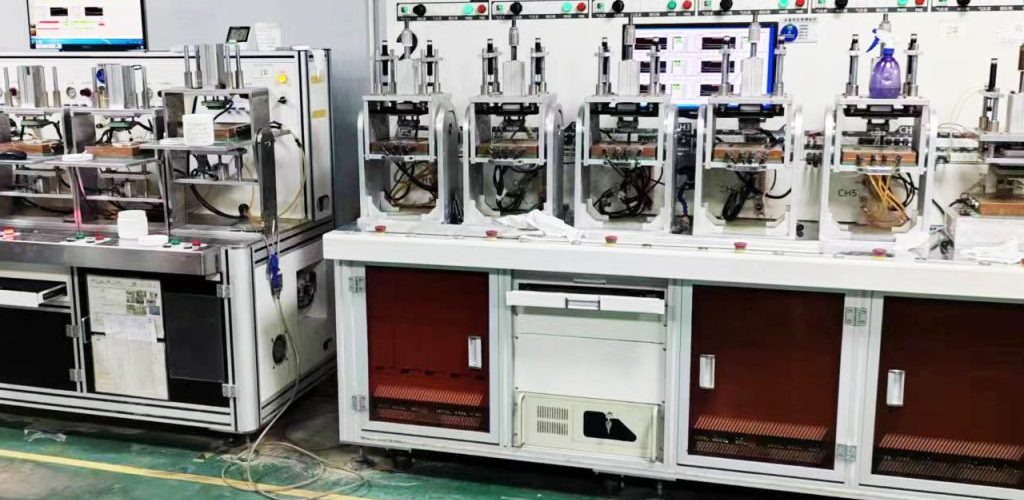
Vapor Chamber Production Line | Professional Thermal Manufacturing System
The vapor chamber production line allows accurate and fast manufacturing of vapor chambers in modern cooling solutions.
Vapor chambers offer high-performance heat-spreading for electronics, power devices, and battery packs.
The increasing demand for smaller, more powerful equipment and systems leads to more need of automated vapor chamber production lines that ensure precision, repeatability and reliability.
In addition, automated and advanced vapor chamber manufacturing lines decrease labor costs, scrap and provide stable product quality.
Hence, acquiring professional vapor chamber production line is a priority for industries manufacturing solutions for performance cooling.
1. What Is a Vapor Chamber
A vapor chamber is a flat sealed plate of metal that transfers heat by evaporation and condensation.
A small amount of working fluid within the chamber is evaporated and condensed continuously to spread heat across the surface.
Vapor chambers are commonly used in laptops, LEDs, power modules, graphics cards and electric vehicle batteries.
They are more efficient and thinner than traditional heat pipes.
A vapor chamber production line makes these chambers using high-end welding, vacuum, and testing equipment.
Learn more about vapor chamber technology from the sciencedirect
2. How a Vapor Chamber Production Line Works
A vapor chamber production line automates the entire manufacturing process.
Raw materials are first processed into metal sheets of copper or stainless-steel.
Stamping, cleaning, welding, and vacuum-sealing of all parts are done automatically.
Working fluid is then injected and leak testing is performed.
Each stage of the process is carefully calibrated for product consistency.
Automated optical inspection machines spot defects in real time.
Advanced data tracking systems are also used for every parameter.
Explore our Heat Pipe Production Line for advanced thermal manufacturing solutions.
3. Main Components of the Production Line
The key parts of a complete vapor chamber production line are:
- Stamping Machine:Shapes the external copper shell and internal structure.
- Ultrasonic Cleaner: Cleans oil, dust, and particles before sealing.
- Laser Welding System:Provides airtight sealing, high precision.
- Vacuum Filling Machine:Evacuates air and fills working fluid under vacuum.
- Aging and Testing Station:Simulates actual thermal performance conditions.
- Leak Detection Equipment: Tests seal using helium or pressure sensors.
- Automatic Packaging Machine:Packs the final vapor chambers for delivery.
Robotic arms and conveyor systems can also be integrated for full automation.
4. Key Features and Advantages
An automated vapor chamber production line offers several key benefits:
- High Precision: Laser welding achieves tight tolerance and leak-free sealing.
- Consistency:Automated operations maintain stable product quality.
- Efficiency:Fast cycle times reduce cost and increase yield.
- Energy Saving:Intelligent control for optimal machine efficiency.
- Safety:Vacuum and leak testing ensures product reliability.
- Data Management:Digital monitoring for real-time quality traceability.
The modular design also allows easy expansion and upgrades as production scales up.
5. Applications
Vapor chambers are critical for thermal management in modern electronic systems.
The vapor chamber production line supports a range of industries, including:
- Consumer Electronics:Smartphone, tablet and laptop cooling.
- LED Lighting:Thermal spreading for high-brightness modules.
- Automotive:EV battery cooling solutions.
- Data Centers:CPU and GPU thermal management.
- Medical Equipment:Stable cooling for medical devices.
Vapor chambers can also improve heat dissipation for renewable energy systems and communication base stations.
6. Production Process Overview
The production process has the following main steps:
- Material preparation and cutting.
- Surface cleaning and degreasing.
- Stamping or CNC machining copper plates.
- Sintering or etching internal wick structures.
- Laser welding top and bottom plates to seal.
- Vacuum air removal and working fluid injection.
- Leak and pressure testing for quality.
- Validation of thermal performance and structural integrity.
- Labeling, drying, and final packaging.
Every step is precisely controlled for uniform plate thickness, clean internal surfaces, and efficient vapor flow.
7. Frequently Asked Questions (FAQ)
Q1: What materials are vapor chambers made of?
A: Copper, stainless steel and aluminum are common materials.
Q2: What working fluid is inside vapor chambers?
A: Deionized water, ammonia or acetone depending on temperature.
Q3: Can the production line be fully automated?
A: Yes. Stamping, welding, vacuum filling and testing are all automated.
Q4: What is the maximum daily output?
A: A production line can output 3,000 to 10,000 per day depending on configuration.
Q5: How is leak-free performance guaranteed?
A: The line uses helium leak detectors and laser weld inspection systems.
8. Conclusion
In summary, a vapor chamber production line provides efficient, precise and reliable manufacturing of thermal components.
Automation, data control and quality inspection combine to make advanced heat transfer products.
As electronics devices get smaller and faster, these systems will play a key role in performance cooling.
In addition, a professional vapor chamber production line is an investment in competitiveness, product consistency and reduced cost.
For these reasons it is a critical solution for companies in the electronics and thermal management industry.

